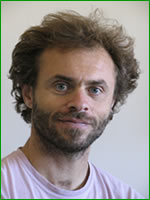 |
|
| Patrick Lemaire initially trained as an engineer. He switched to biology when he entered the PhD programme at EMBL in 1985, under the supervision of Patrick Charnay. He received his Ph D in 1990 for work on the identification and function of the zinc finger genes Krox 24 and 20 . In 1991, he joined John Gurdon's lab at the Wellcome- CRC Institute, University of Cambridge (UK), where he studied the formation of the Xenopus Spemann organiser. He showed that the activation of at least some organiser genes does not require cell communication, implying the existence of cell autonomously acting dorsal determinants, thereby prefiguring the identification of ß-catenin as a major player in organiser formation. He also cloned the major organiser homeobox gene Siamois . Since returning to France in 1994, he has led a CNRS research group at the Institute for Developmental Biology of Marseille (IBDM). His group first focused on Xenopus early patterning and the role of Siamois . In 1998, the ascidian Ciona intestinalis , an invertebrate chordate, was introduced and has gradually become the lab's major experimental organism. Recent results include the molecular identification of the ascidian neural inducer, FGF9/16/20, and its downstream transcriptional logic. In parallel, P. Lemaire's group started applying a combination of bioinformatics and functional genomics to unravel the molecular cascades driving nervous tissue formation in ascidians. |
 |
|